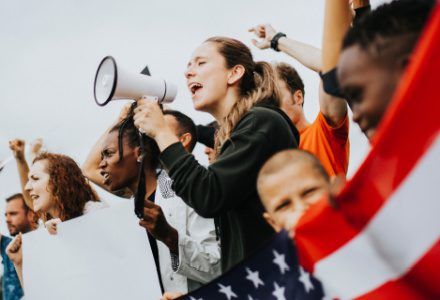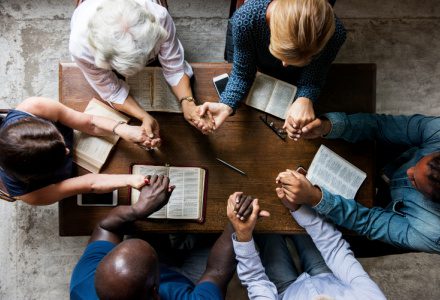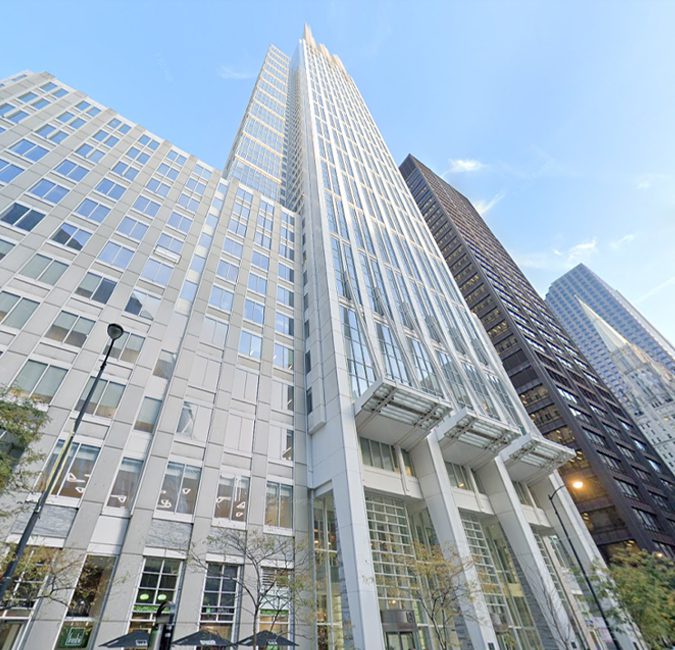When Is Someone Too Dangerous To Have a Firearm (The Slippery Slope and The Second Amendment)
A constitutional right means little if government officials have the discretion to suspend or ignore that right. Constitutional rights limit what government officials can do even if those actions could theoretically protect public safety. In fact, constitutional rights are particularly needed when personal freedoms are viewed as impediments to public safety. The Fourth Amendment, for example, limits the tools available to law enforcement. Police officers cannot, for example, constitutionally stop and search a car on a hunch, even though this power might very well allow the police to prevent some crimes some happening and solving some crimes that already occurred. The framers of the constitution put these limitations on government power because governments can abuse individuals and harm personal liberties without such limits. While the Fourth Amendment imposes a cost on public safety, in a narrow understanding of that term, in a broader sense of the term the safety of all citizens is increased by limiting the ability of the police and the government more generally to harass people, persecute political opponents, or to shield incompetence.
The Second Amendment is no different. The Second Amendment protects the ability of individuals to defend themselves. The private ownership of firearms makes self-defense a realistic option for millions of Americans. Studies have suggested, for example, that Americans use a firearm to defend themselves anywhere from one to three million times a year. In only a small number of cases in which a firearm is used defensively is the firearm actually discharged. In an even smaller number of cases in which a firearm is used defensively is someone shot, let alone killed. In the vast majority of cases, an attack, robbery or home invasion is stopped when the victim shows a firearm. While crimes committed with firearms get extensive media attention, the defensive use of a firearm in which no one is hurt rarely gets any attention. This reality has created a distorted view of how firearms are used in America.
Every constitutional right, however, has limits. While police generally need a warrant to enter a home, there are exigent circumstances that allow the police to enter a home without a warrant. With respect to the Second Amendment, there are also legitimate limits, for example, on who can possess a firearm. Protecting the Second Amendment, and other constitutional rights, involves preventing the exceptions from swallowing the right. A significant danger to any constitutional right, and the Second Amendment in particular, is the gradual neutering of the right through the expansion of the exceptions in the name of public safety.
When the Supreme Court held (in the Heller case) that the Second Amendment protects an individual’s right to keep and bear arms and applied that right to the states (in the McDonald case), it did not create a test for evaluating Second Amendment claims. Instead, the Supreme Court left the development of such a framework to the lower courts. Those courts generally adopted a two part test in which a court would look at the burden the restraint imposed on Second Amendment rights and then “balance” that burden with the public interest behind the challenged law or government action. Suffice it to say, the balancing test almost always resulted in a restraint on Second Amendment rights getting upheld. The Supreme Court put an end to the interest balancing tests developed by the lower courts in its decision in Bruen that was issued only a few years ago.
In Bruen, the Supreme Court made it clear that the Second Amendment was not a “second class” right. The Supreme Court rejected the idea that lower courts could essentially engage in policy making under the rubric of interest balancing. Instead, courts would have to ask two questions. First, does the law or action interfere with the right to keep and bear arms. Second, if the restraint does interfere with the right, the government has the burden of justifying the infringement by showing a historical tradition of regulation at the time the Second Amendment was enacted (and possibly when the 14th Amendment was enacted) that would support the challenged restraint.
Particularly thorny Second Amendment issues involve how the government can and should deal with individuals who (a) have a history of dangerous or criminal behavior, or (b) are believed to be dangerous because of mental health problems or substance abuse problems. Giving the government or law enforcement carte blanch to seize a person’s firearms based on a subjective belief that the person is “dangerous,” however, is type of exception to the Second Amendment that could easily swallow the entire right. Recently, the Supreme Court dealt with this issue in the Rahimi case. For a more complete discussion of the Court’s decision in Rahimi, you can review article entitled: The Second Amendment and Orders of Protection: The Supreme Court’s Curious Decision.
In Rahimi, the Supreme Court addressed a challenge to a federal law that makes it unlawful for an individual subject to an order of protection based on a showing of domestic violence to possess any firearms or ammunition while the order of protection was in effect. The Supreme Court’s primary holding in Rahimi was that the Second Amendment did not prohibit disarming such individuals, because a precondition to the entry of an order of protection is a judicial determination, after a hearing, that the individual poses a clear threat to someone else. Even then, the restraint on Second Amendment rights lasts only as long as the order of protection remained in effect.
Orders of protection did not exist when the Second Amendment was enacted, however, which meant that the Supreme Court had to determine whether other laws from that time period were analogous to orders of protection. The Supreme Court turned to what were called “surety laws” and “going armed laws” that existed when the Second Amendment was enacted. While these laws did not authorize the issuance of an orders of protection, they did allow for the seizure of firearms from an individual that a court determined posed a danger to other people. While the Supreme Court’s reliance on the “surety laws” and “going armed laws” in Rahimi is subject to criticism, the Supreme Court pointed out that the restraint created by orders of protection was limited to the duration of the order of protection that typically ran for only a couple years. The Supreme Court left open the possibility that more extensive or permanent prohibitions on possessing firearms would need a tighter historical analogue.
A critical take away from Rahimi is that non judicially based seizures of firearms based on the mere suspicion that an individual is dangerous are unconstitutional.
This takes us to the decision in Ramos-Cruz v. Commonwealth of Puerto Rico (“Ramos”) from the federal district court of Puerto Rico. In Ramos, the plaintiff challenged Article 2.13 of the Puerto Rico Weapons Act (Article 2.13) because the police had used this law to justify an almost two-year seizure of her firearms and her license to possess a firearm. The court held that Article 2.13, as applied to Plaintiff, violated her Second Amendment rights.
Article 2.13 directs the following: “[a]ny law enforcement officer shall temporarily seize the license, firearms, and/or ammunition of a citizen if he has grounds to believe that the firearms license holder . . .” Article 2.13 then lists a large number of extremely broad grounds that “shall” apparently require “any law enforcement officer” to seize an individual’s license, firearms and ammunition. Those grounds include, for example: (a) “uttering threats to commit a crime,” (b) “when it is believed that the firearms license holder has a mental illness,” or (c) “in any other situation of grave risk or danger that warrants the seizure.” (Emphasis added). The vagueness of what these terms cover (particularly the last clause), and the discretion it gives to “any law enforcement officer” to act on a subjective belief is inconsistent with the Second Amendment.
The facts in Ramos highlight how Article 2.13 invites the arbitrary, abusive and, very possibly, malicious infringement of Second Amendment rights. Ms. Ramos went to the police to file a domestic violence report against her husband. When she filed her report, the first step apparently taken by the police was to force Ms. Ramos to surrender her license to possess a firearm. The police then went to Ms. Ramos’ residence and seized her firearms and ammunition.
The day after Ms. Ramos’ firearms were seized, she obtained an ex parte temporary restraining order against her husband. At some point thereafter, her husband’s firearms were also seized by the police. The court noted that while the police refused to return to Ms. Ramos her firearms, despite her repeated requests, the police “promptly returned” to her husband his firearms. Indeed, the police did not return to Ms. Ramos her license, firearms and ammunition until after she filed her lawsuit.
The defendants argued that the Supreme Court’s decision in Rahimi justified the seizure of Ms. Ramos’ firearms and her license to possess a firearm. The district court rejected this argument. The district court pointed out that in Rahimi the Supreme Court based its holding on “surety laws” and “going armed” laws, neither of which supported Puerto Rico’s argument. The “surety laws” and “going armed” laws did not give law enforcement officials unilateral discretion to determine if someone was “dangerous” and then seize their firearms. Instead, the Supreme Court stated that “both types of statutes required ‘judicial determinations’ of whether a particular defendant would threaten or had threatened another with a weapon.” The district court stated that “Article 2.13 allows a police officer to make a determination of dangerousness prior to any judicial process and based on his or her subjective appreciation of a situation’s dangerousness.”
The district court also called out the absurdity of the defendants trying to compare Ms. Ramos to Mr. Rahimi. Mr. Rahimi’s girlfriend testified that Rahimi had assaulted her a number of times. In one assault, Rahimi “grabbed her wrist [when she wanted to leave], dragged her back to his car, and shoved her in, causing her to strike her head against the dashboard.” A bystander saw this and Rahimi responded by getting “a gun from under the passenger seat.” Rahimi’s girlfriend used the distraction to run away from the scene. As she was running away, Rahimi’s girlfriend heard a shot, but it was not clear if Rahimi was trying to shoot his girlfriend or the bystander. Rahimi later called his girlfriend and threatened to shoot her “if she reported the incident.” Despite the threat, Mr. Rahimi’s girlfriend obtained an order of protection, and while “Rahimi had an opportunity to contest [his girlfriend’s] testimony, he did not do so.”
Defendants comparing Ms. Ramos to Mr. Rahimi was outrageous. The district court put it more diplomatically: “Its stretches logic to find that the putative victim of domestic abuse can be disarmed under the same standard” that the Supreme Court relied on in Rahimi. At a broader level, the Second Amendment is not a meaningful constitutional right if any police officer can confiscate an individual’s firearms and ammunition based on his or her “subjective belief” that the individual is somehow “dangerous.” This standard is no standard at all.
These broad grants of discretionary authority to intrude on Second Amendment rights can be abused on a small scale or an extremely large scale. Police could use Article 2.13 to engage in mass confiscations of firearms (as the police did in New Orleans in the aftermath of hurricane Katrina). Article 2.13 also creates the real and substantial risk that law enforcement will use this discretion for improper purposes such as harassment, discrimination and retaliation. For example, there are many possible improper reasons the police might have seized Ms. Ramos’ firearms. For example, the police may have been annoyed by Ms. Ramos’ reporting domestic violence. Second, the police might have believed that a female victim of domestic violence was too unstable to have firearms. Third, the police might believe that women should not have access to firearms. Finally, the police might have just irrationally believed that Ms. Ramos was dangerous. The reasons the police acted against Ms. Ramos could, therefore, range from blatant misogyny to plain incompetence and sloth. Either way, police should not be allowed to so casually infringe constitutionally protected rights.
Previous Post
DEI Programs Can Create A Hostile Work Environment
The United States Appellate Court for the Second Circuit recently held that the mandatory DEI programs implemented by the New York City Department of...
NEXT Post
When Is Someone Too Dangerous To Have a Firearm (The Slippery Slope and The Second Amendment)
A constitutional right means little if government officials have the discretion to suspend or ignore that right. Constitutional rights limit what government officials can...







